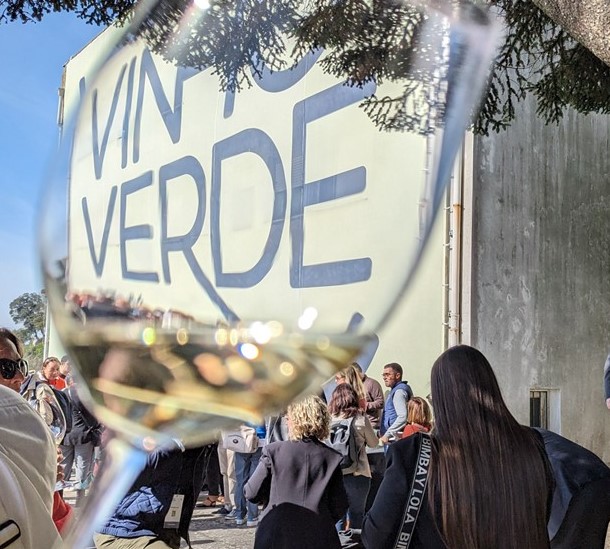
| Portuguese wine in the spotlight |

| I have just returned from a fabulous trip to Porto in Portugal and the Dåo region, verging on the Douro Valley, one of 14 wine regions in Portugal, many unexplored by us in the UK, not only geographically but viniculturally too. Why? Because historically, the Portuguese drank more wine than they exported; they still do! I met several wine makers who produce for their domestic market only. Several wine varietals were new to me, including Encruzada, my new favourite white variety, and a red wine, Rufete, often a little oaky. This oakiness comes from the ageing in wooden barrels, key in the process of wine making. The type of wood used to make the barrel has a significant impact on the flavour, aroma, and colour of the finished product, with different woods imparting different characteristics. Oak is the preferred wood; it is porous, allowing oxygen to permeate the wood, resulting in a slow maturation (ageing) of the wine. American, French and, increasingly, Hungarian oak is used. There is also a move towards Acacia which is considered more durable, and imparts a more intense flavour albeit with softer tannins. Costing around Euros 1000 each new, every barrel is replaced after 5 vintages (years) with the older ones being sent to the sherry houses in Spain or whisky distilleries in Scotland for use in their ageing process. Different Coopers (barrel makers) mark the barrels with their brand plus the different model of barrel. Not only are there slight differences in shape, but the “toasting” (slight burning) of the inside of the barrel will be different in the various models. Being porous, oak allows some evaporation of the wine, or as winemakers believe, rather romantically, the Angels take their share. Up to 1.5 litres per month per barrel is lost to the Angels’ share, so the winemaker has to top them up on a regular basis. Older vines’ roots go down more than 30 metres to access good minerals and water from deep in the soil. These make more intense wines. Some of the oldest vines are used in the famous fortified wine known as Port, and that made on the Portuguese island of Madeira, which apparently was used by ladies in days gone by as a perfume, by dabbing a little behind their ears. I am still a great fan of Vihno Verde (which I now know is pronounced Vino Verd – the Portuguese swallow a lot of the ends of words) and of Port Tonic- a light cocktail that they make with white or rosé port and tonic; delicious! Did you know that Sparkling wine is made in Portugal, called Bairrada? Well, that too is now a new favourite. I am working on getting one in the range soon. My trip opened my eyes to many new Portuguese regions, wines and traditions, not least the one that states that if you pick up your wine glass with your right hand, you have to drink all that is in it in one go. Perhaps a myth designed by winemaker to encourage greater consumption. The food – well, that is another whole newsletter…next month. Suffice it to say…absolutely fabulous. Saúde – as they say in Portuguese. |
